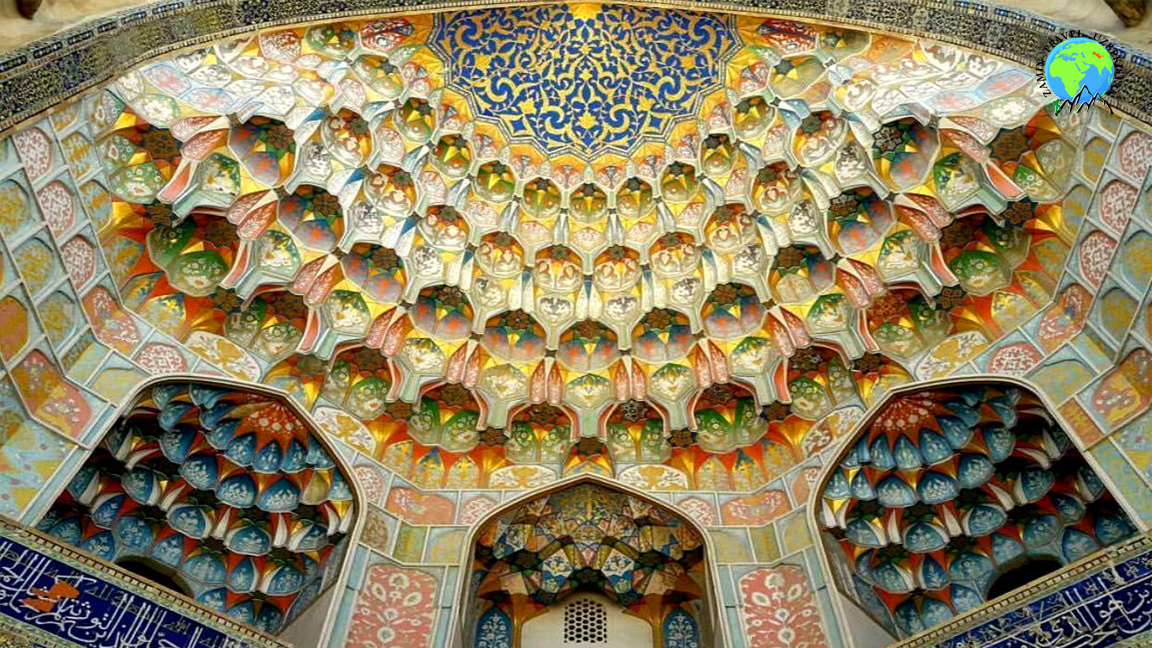


In 1652 a new madrasah was built opposite the Ulugbek Madrasah, by order of the Bukhara ruler Abdulazizkhan, whose splendor and luxury as well as an extraordinary decoration were to surpass all other madrasah. Indeed, even if the general layout of the madrasah followed the 15th century architectural style, its large dimensions and rich decoration allow it to be classified as one of the most outstanding architectural monuments in Uzbekistan. The great portal of the Abdulazizkhan Madrasah dominates all other neighboring structures. Vertical rows of relief arches accentuate its flanks. In contrast to earlier madrasahs, in which the entire surface of the tympanum is decorated with girih geometric patterns, the facade of the madrasah is covered with islimi patterns of leaf motifs. All over the portal are patterns of stems with buds and leaves. In between are artfully inserted pictures of the fabulous Semurg birds. The carved mosaics adorn the flank of arched panels; they are exceptionally beautiful, wonderful bouquets of fantastic flowers, in vases. Abdulazizkhan is known not only as an emir, but also as a mystically oriented poet. Among his courtiers were philosophers and poets. At court they used arguments and poetry competitions, in which Abdulazizkhan himself was involved. In order to express the high spirituality of the rulers, the architects resorted to a bright, picturesque quality of the decorative allegories of the Mardasah. The dome of the mosque was decorated with Kundal painting in gold against a blue background, which serves as relief and gives the impression of rising above the intricate system of stalactite pendentives and abutments. According to the historian Muhammad Munshi, who "raised the cathedral in high perfection, like a chrysolite vault of heaven." But for all of that, the structural elements in extremely exquisite decorative ornaments that carry the motifs of clouds and tongues of flame. The designers decorated the classroom of the madrasah with romantic architectural images and parkland. The walls of the Hujra cells also contain medium-sized decorative panels with picturesque pictures of bouquets of flowers. A rich selection of decorative patterns, as well as application in the decoration of the religious The construction of non-standard interior paintings is a beautiful conclusion to medieval architecture in Asia.